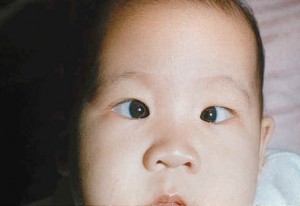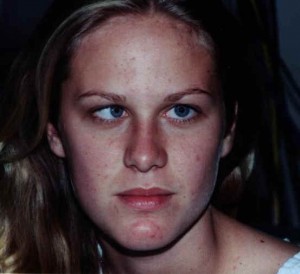Strabismus refers to misaligned eyes. If the eyes turn inward (crossed), it is called esotropia. If the eyes turn outward (wall-eyed), it is called exotropia. Or, one eye can be higher than the other which is called hypertropia (for the higher eye) or hypotropia (for the lower eye). Strabismus can be subtle or obvious, intermittent (occurring occasionally), or constant. It can affect one eye only or shift between the eyes.

When young children develop strabismus, they typically have mild symptoms and do not complain of double vision. They may hold their heads to one side if they can use their eyes together in that position. Or, they may close or cover one eye when it deviates, especially at first. Adults, on the other hand, have more symptoms when they develop strabismus. They have double vision (see a second image) and may lose depth perception. At all ages, strabismus is disturbing. Studies show school children with significant strabismus have self-image problems.
Children have the ability to suppress the deviating eye which prevents them from having the symptoms of diplopia. Unfortunately, because of this suppression of the deviating eye, it can develop a gradual loss of vision. Strabismus can cause permanent loss of vision if not treated at an early age by the appropriate therapeutic techniques. Additionally, the misalignment of the eyes prevents their simultaneous usage (fusion) and depth perception. Depth perception is based on both eyes perceiving simultaneous images of an object. These images are slightly different, because of the different angle from which each eye views an object. The brain is able to interpret this image disparity and develop a perception of the objects location in space (steropsis). For fusion and steropsis to develop and be maintained correction of any misalignment of the eyes must be performed.
Strabismus is often treated by surgically adjusting the tension on the eye muscles. The goal of surgery is to get the eyes close enough to perfectly straight that it is hard to see any residual deviation. Surgery usually improves the conditions, however more than one surgery may be necessary. Surgery usually requires general anesthesia and can be performed as an outpatient. Prisms and glasses are alternatives to surgery in some cases.


